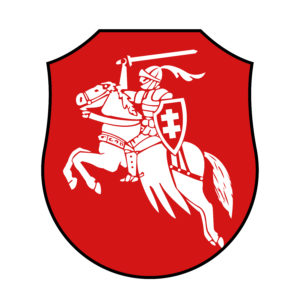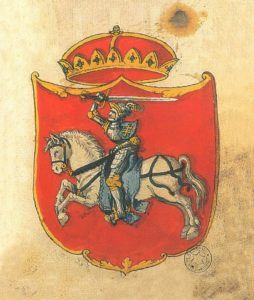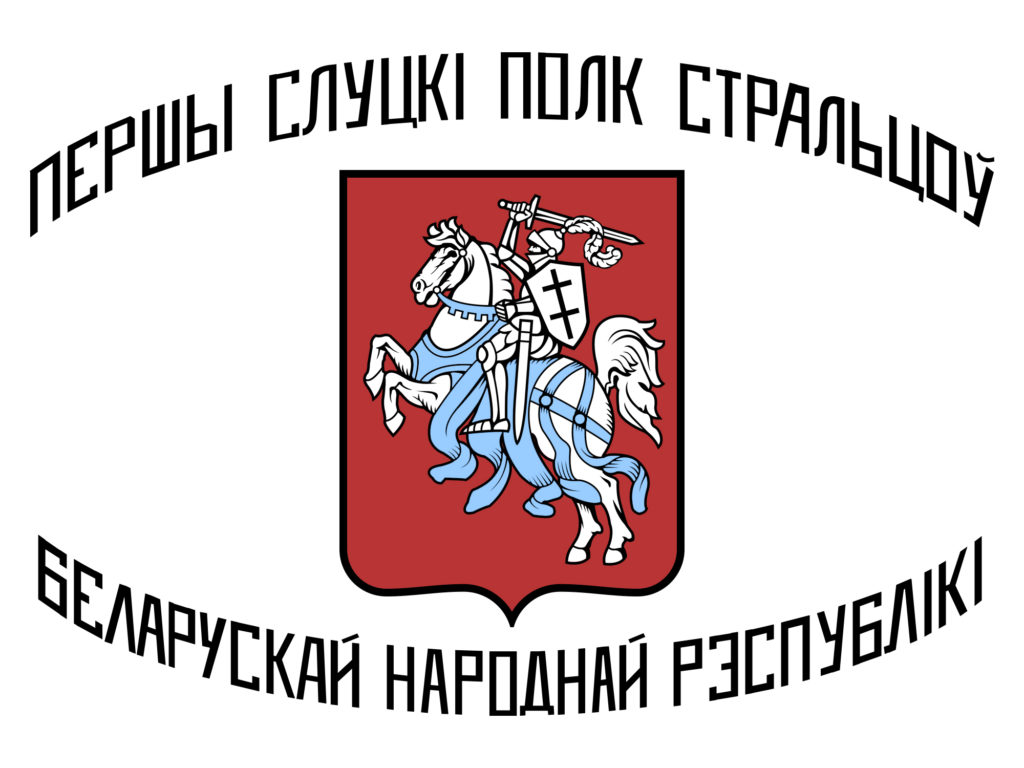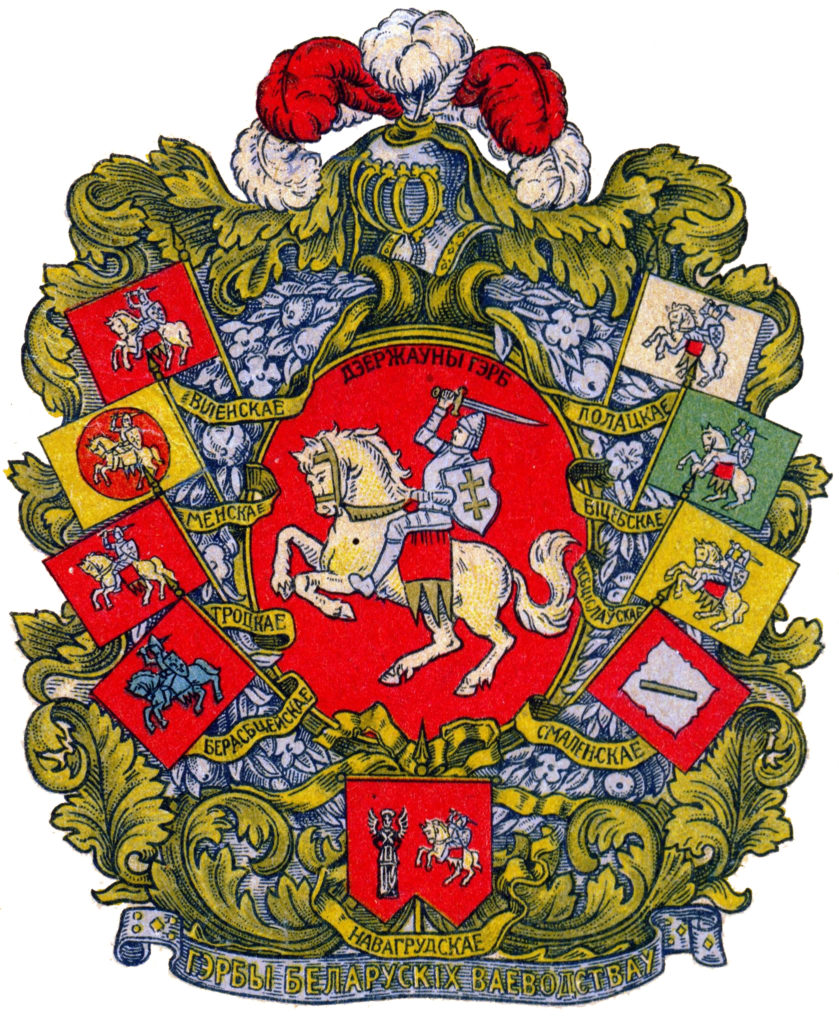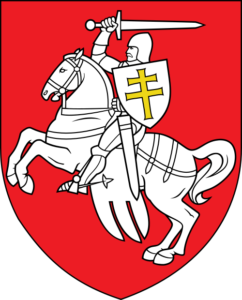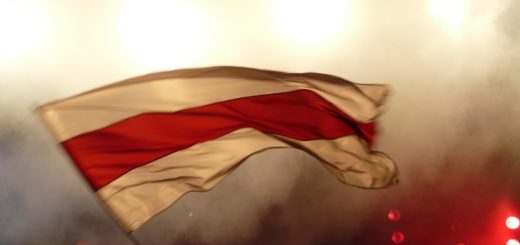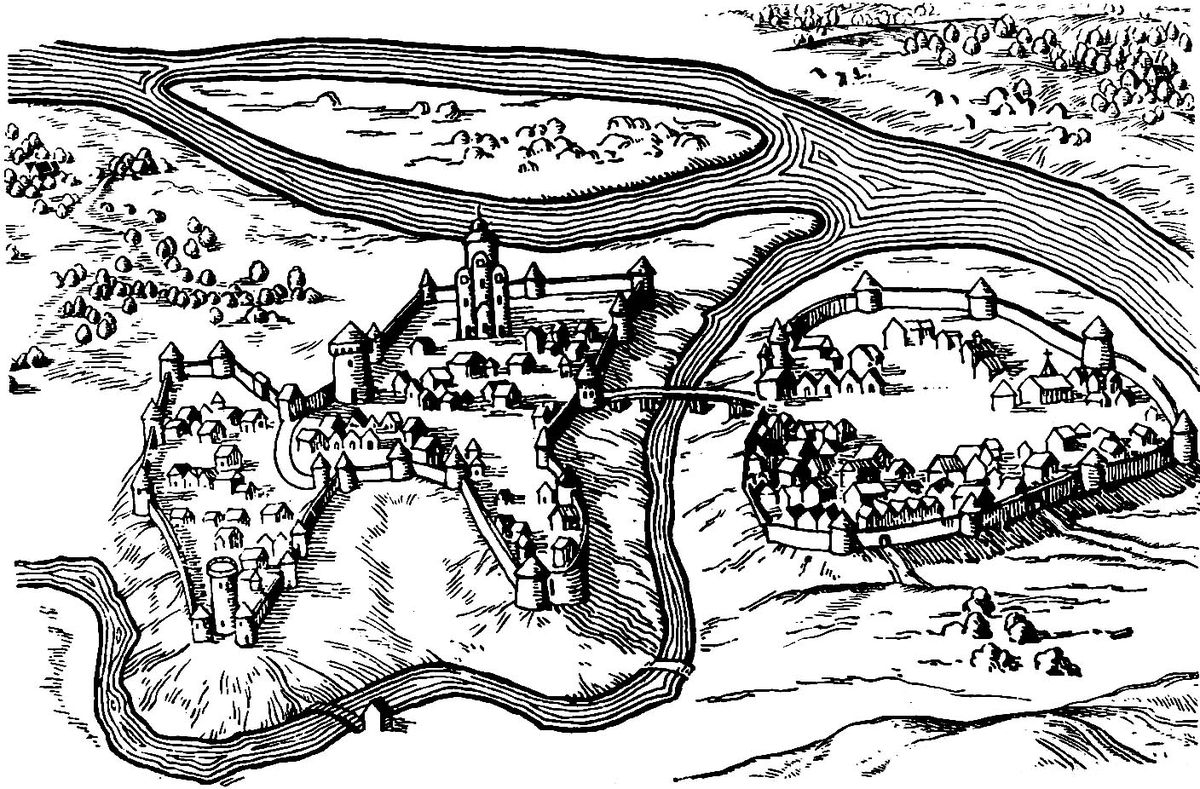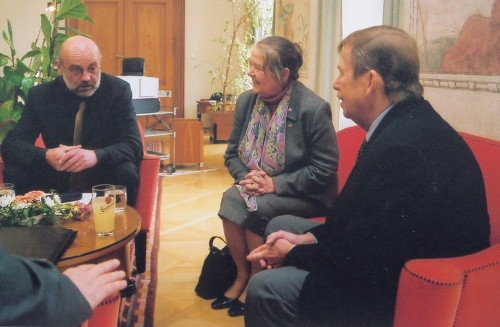Pahonia, the coat of arms of Belarus
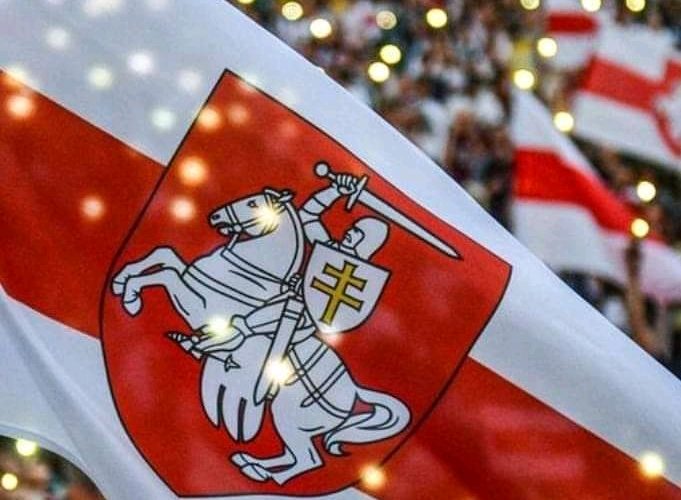
Pahonia (Пагоня in Belarusian and Pogoń in Polish, translated as “the chase” or “the pursuit”) is the state symbol of Belarus since the Middle Ages.
Pahonia was the coat of arms of the Grand Duchy of Lithuania, a medieval feudal state of which the lands of modern Belarus made up the largest part, and which was formed by the Eastern Slavic culture, language and statehood traditions.
The first historical description of the Pahonia dates back to the late 13th century. The symbol is described in the Chronicle of Lithuania and Samogitia (Belarusian: “Хроніка літоўская і жамойцкая”, original medieval Belarusian: “Кройника литовская и жмойтская”) as the symbol of Narymont of Polatsk, son of Hiedzimin (Gedymin), Grand Duke of Lithuania:
“в гербе муж збройный, на коню белом, в полю червоном, мечъ голый, яко бы кого гонячи держал над головою, и есть оттоля названый погоня”
(“in the coat of arms, there is an armed man on a white horse, on a red field, with his sword naked, as if he was chasing someone and holding it above his head, and thus it is called the Pursuit”)
According to the Hustyn Chronicle, the Pahonia was created under the rule of Grand Duke Vicień (c. 1295 – c. 1316.):
“А Витен нача княжити над Литвою, измысли себе герб и всему князству Литовскому печать: рыцар збройный на коне з мечем, еже ныне наричут Погоня.”
(“As Vicień started ruling over Lithuania, he invented himself a coat of arms and a seal to the whole duchy of Lithuania: an armed knight on a horse with a sword, which is today called the Pursuit”)
The charging knight was a wide-spread image in the Eastern Slavic and Baltic lands at that time, symbolising military power and the rule of the monarch.
Since the 14th century, the image of the Pursuit was put on a heraldic shield and as such used as the coat of arms of the Grand Dukes of Lithuania, Hiedzimin, Jahajła and Vitaŭt, with possible variations as to the design. It soon became the state symbol of the Grand Duchy of Lithuania as a whole and a dynastic symbol of the Hiedziminavič (Gediminid) families, descending from Grand Duke Hiedzimin. These include a number of Polish and Russian noble families: Sanhuška (Sanguszko), Golitsine, Kourakine, Trubiacki (Trubetskoy), Čartaryski (Czartoryski), Belsky and others, many of whom have included the Pahonia as part of their family coats of arms.
A Byzantine double cross was added to the rider’s shield by Grand Duke Jahajła after his baptism in 1386. The golden cross on a blue shield became the coat of arms of the Jagiełłon dynasty.
In the first half of the 15th century, the classical view of the coat of arms became widely used, with the riding knight holding a sword in his raised hand and a shield in the left hand.
In accordance with the Statue of Lithuania adopted in 1588, all Lithuanian (Belarusian) cities, towns and lower administrative divisions (“paviety”) had to have a seal with the Pahonia on it to verify decisions of the Grand Duke:
“Тежъ мы, господаръ, даемъ подъ геръбомъ того паньства нашого, великого князства литовъского, «Погонею» печать до кожъдого повету, на которой естъ написани около геръбу имя того повету. А тую печать писаръ земъский присяжный у себе самъ, а не хъто инъшый, ховати маеть, которою печатью и под тытуломъ нашымъ позвы мають быти печатованы и выдаваны. А иные никоторые листы, выписы и сознанья, кроме только самыхъ позвовъ, тою печатю не маеть быть печатованы.”
(“Also we, as the ruler, grant under the coat of arms of our state, the Grand Duchy of Lithuania, under the Pursuit, a seal to each of the localities, on which the name of the locality shall be written next to the coat of arms. That seal shall be preserved by the [relevant local official] himself, and nobody else, and with this seal under my name shall he certify and issue documents.”)
Different variations of the Pahonia were symbols of provinces formed on the territory of Belarus: the Miensk (Minsk) Voivodeship, Vilnia (Vilnius) Voivodeship, Viciebsk (Vitsebsk) Voivodeship, Połack Voivodeship, Bieraście (Brest) Voivodeship, Mścisłau (Mstsislau) Voivodeship, and the Voivodeship of Padlašša (Podlachia, Podlasie).
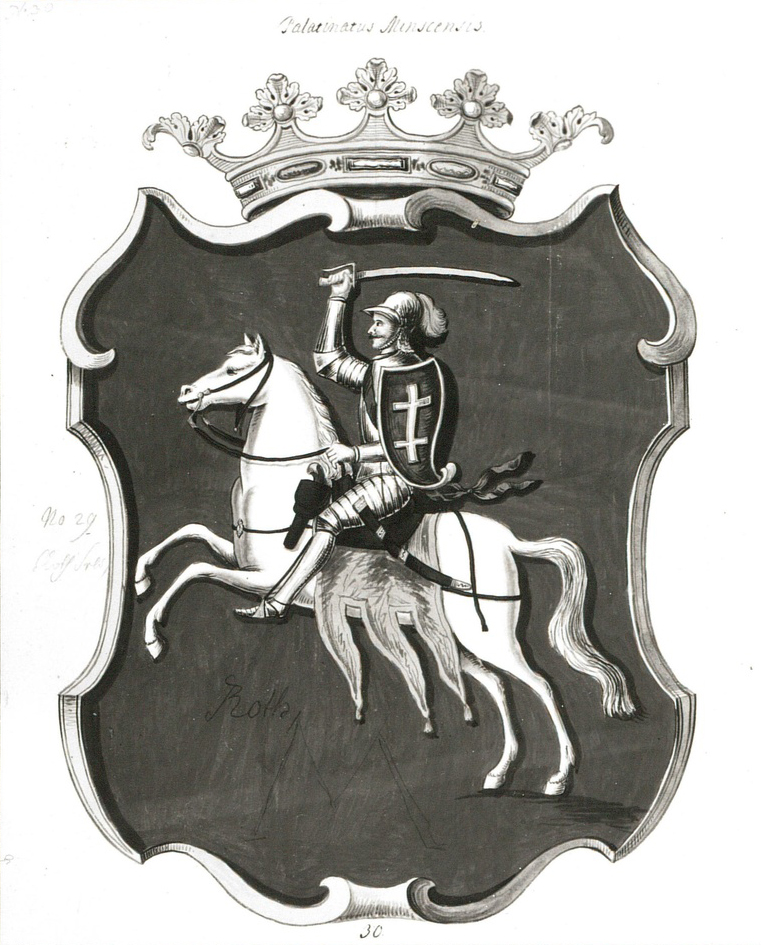
Miensk Voivodeship, 1720 
Mścisłau Voivodeship, 1720 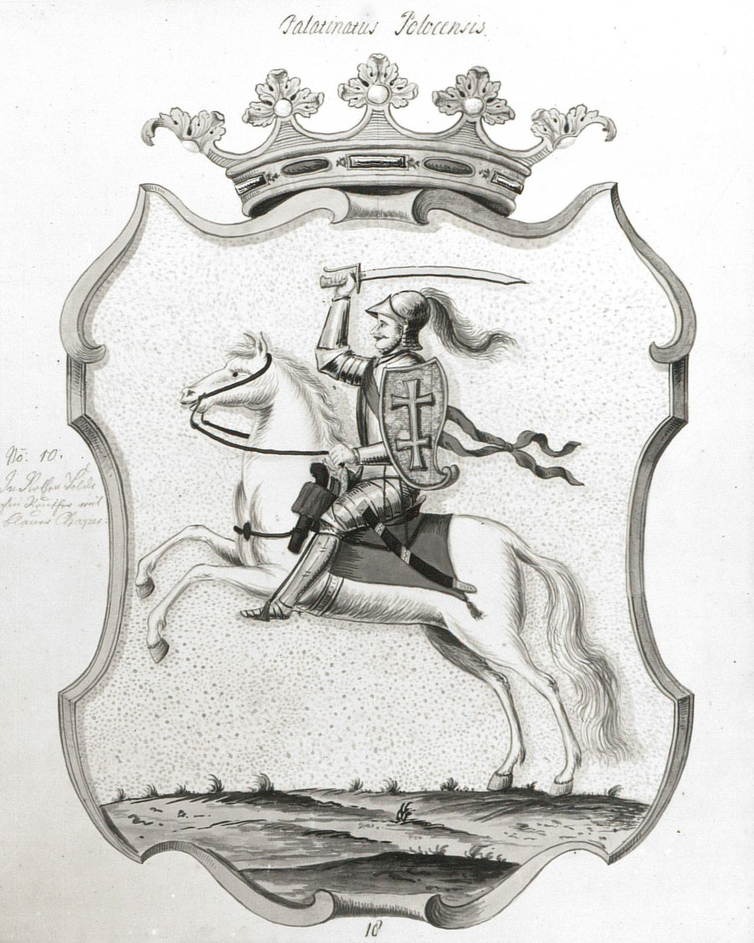
Połack Voivodeship, 1720 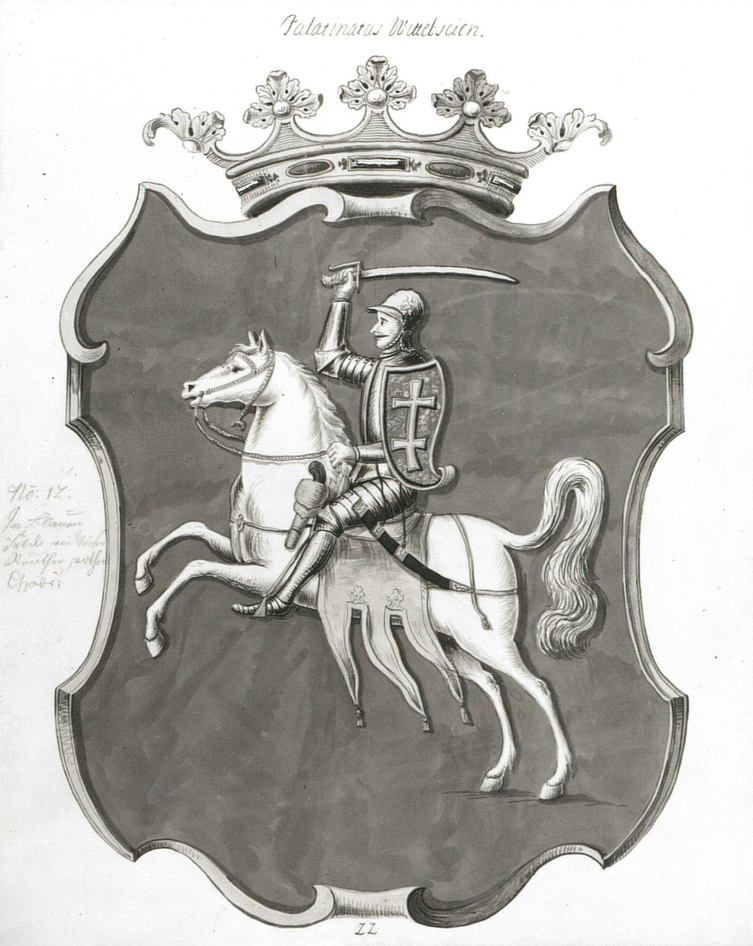
Viciebsk Voivodeship, 1720 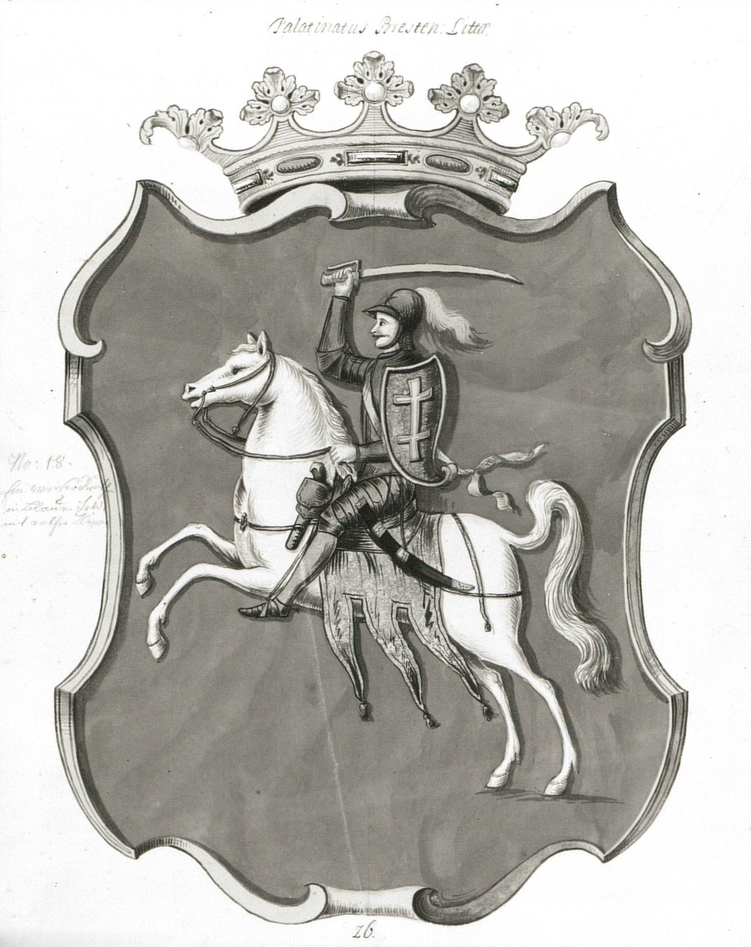
Bieraście Voivodeship, 1720
After the unification of the Grand Duchy of Lithuania and the Polish Kingdom into the Polish-Lithuanian Commonwealth, the Pahonia became an element of the royal coat of arms of this state.
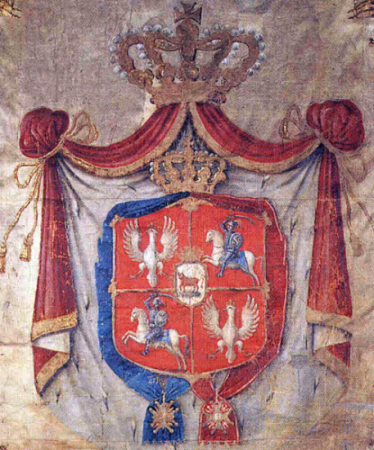
As Belarus was incorporated into the Russian Empire following the Partitions of Poland in the late 18th century, the Pahonia remained a key element of the coats of arms of Russian provinces (governorates) established on the territory of Belarus, namely Viciebsk Governorate, Harodnia (Grodno) Governorate, Vilnia (Vilno, Vilnius) Governorate and the Połack Viceroyalty. Besides that, under Russian rule, the Pahonia became an element of new coats of arms created by the Russian administration for numerous cities in Belarus to replace their historical symbols. These cities and towns included Vilnia, Połack, Viciebsk, Lepiel, Suraž, Nieviel, Vialiž and others.
The Pahonia became an element of the great imperial coat of arms of Russia and of various Russian military units formed on the territory of Belarus.
During the Napoleonic Wars and Napoleon’s Russian campaign, the Pahonia was used by Belarusians who fought on his side.
The Pahonia was one of the symbols of uprisings against the Russian rule in Belarus in 1830-1831 and in 1863-1864.
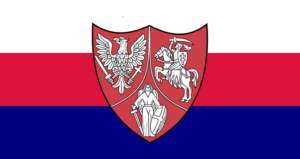
In 1918, the Pahonia became the official coat of arms of the Belarusian Democratic Republic. Since then, it is being used by the Rada of the Belarusian Democratic Republic in exile, as well as by organisations of the Belarusian diaspora. A different variant of the Pahonia became the symbol of the newly established Republic of Lithuania. It was also used as an element of the coat of arms of the short-lived Poland-leaning Republic of Central Lithuania.
From that moment, the Pahonia has established itself as a commonly accepted symbol of the modern Belarusian national liberation movement, alongside the white-red-white flag which is based on the Pahonia’s colours.
Between 1919 and 1939, the Pahonia was used by many political and cultural organisations in West Belarus, annexed by Poland in 1920, including the Belarusian Schools Society (Таварыства беларускае школы), the Belarusian Peasants’ and Workers’ Assembly (Беларуская сялянская і работніцкая грамада), the Belarusian Christian Democracy (Беларуская хрысьціянская дэмакратыя), and others.
During the Second World War, the Pahonia was used by Belarusian organisations in Nazi-occupied Belarus.
Since after the war, the Pahonia was used by organisations of the Belarusian diaspora in the Free World. In Soviet-occupied Belarus, the public display of Belarusian national symbols, including the Pahonia, was punishable.
During the Perestroika, the Belarusian Popular Front, a nationwide movement for democracy and independence, has started using the Pahonia as one of its symbols. This is when this coat of arms became again popular in Belarus.
On 19 September 1991, a few weeks after Belarus declared independence from the Soviet Union, the parliament of Belarus has officially approved Pahonia as the country’s coat of arms.
In June 1995, the authoritarian president Alaksandr Łukašenka replaced the Pahonia with a modified Soviet emblem as the state coat of arms following a falsified and illegal referendum held in May that year.
Since then, it is one of the symbols of the democratic aspirations of the Belarusians and a symbol of resistance against the regime of Alaksandr Łukašenka. Public display of the Pahonia again became punishable by Łukašenka’s state security, like in Soviet times – even though no official ban of the symbol ever took place. Moreover, on 14 May 2007 the government of the Republic of Belarus has included the Pahonia into the official list of intangible historical and cultural heritage of Belarus.
Today, the Pahonia enjoys immense popularity in the Belarusian society and will one day inevitably be restored as the official symbol of Belarus.

